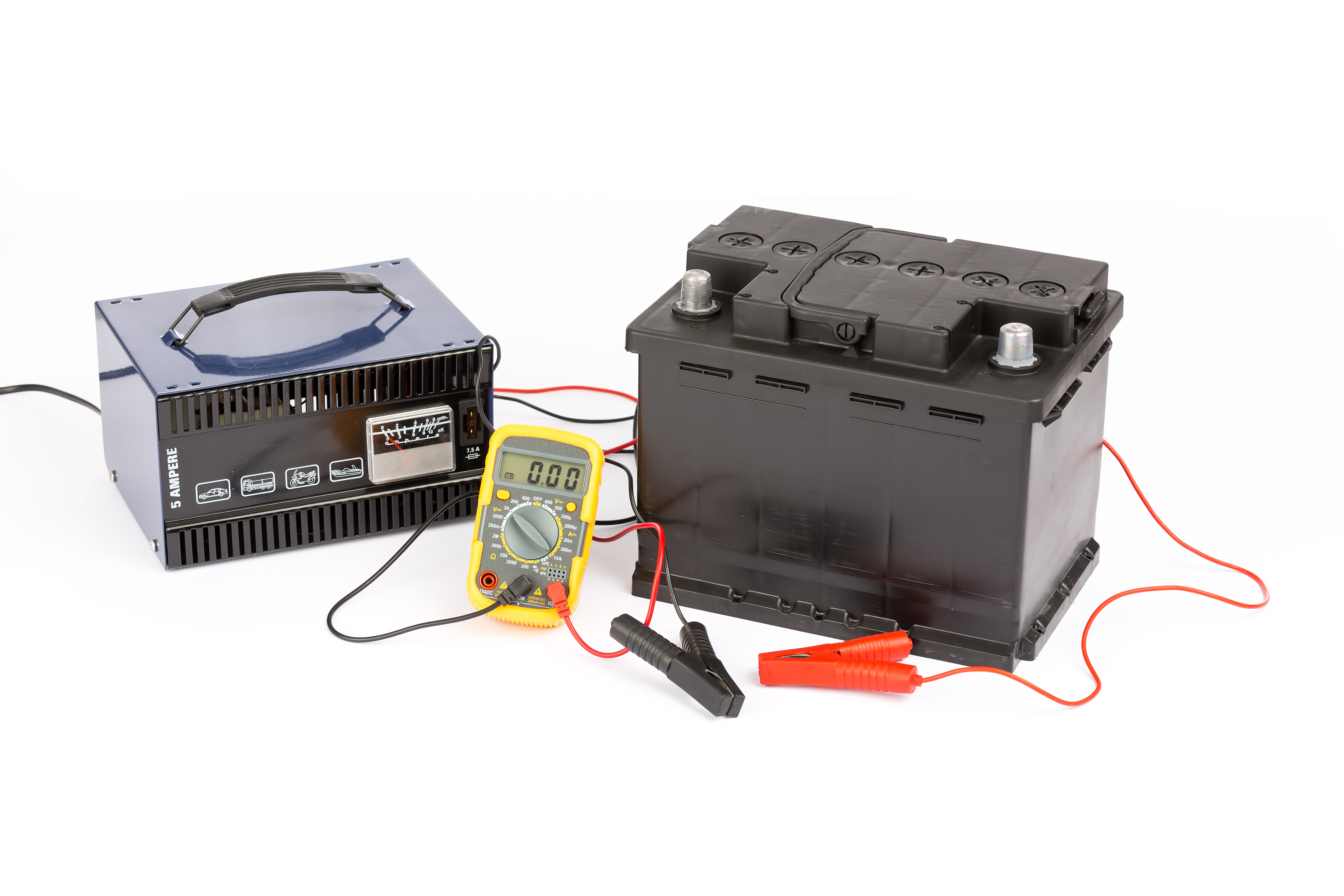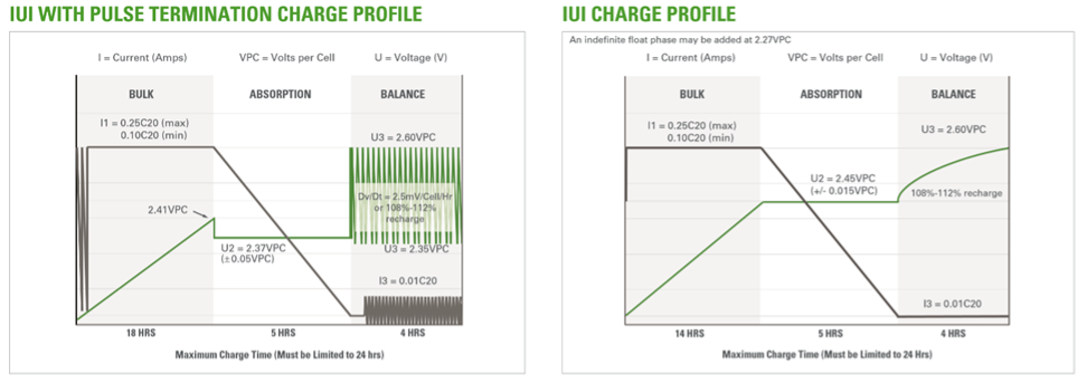
Selecting a charger
Most Deep Cycle applications have a charging system already installed for battery charging (e.g. solar panels, inverters, golf car chargers, alternators, etc.). However, if the original battery is being replaced with a different technology or a new battery charger is needed, care should be taken to choose the right charger.
When changing between Flooded, AGM and GEL-type batteries, the existing charger may need to be changed and/or the voltage cutoffs reset. Many chargers installed by original equipment manufacturers have selector switches built into their systems that allow the user to change between Flooded, AGM and GEL-type batteries.
What follows will help in making a proper selection.
There are many types of chargers available today. They are usually rated by their voltage and initial or starting rates, or the rate in amps that the charger will supply at the beginning of the charge cycle.
When selecting a charger, the charge rate should be between 15% and 30% of the battery’s 20-hour AH capacity. For example, a battery with a 20-hour capacity rating of 100 AH should use a charger rated between approximately 15 and 30 amps (for multiple batteries charging, use the total AH rating of the entire bank to determine the charger rating required). The higher the initial charging current, the better. Take care not to exceed the manufacturer's recommended maximum. The faster the battery can be charged and left to rest before its next discharge, the better.
We recommend using a charger from one of the high-quality charger manufacturers Discover has approved. OEM chargers with Discover-approved charge curves prolong battery life and enhance performance.
Approved OEM charge curves for Discover Dry Cell AGM batteries

Alternatively, we recommend using a 3-stage voltage compensating and temperature sensing charger with a generic charge curve approved for AGM batteries. These chargers usually have three distinct charging stages: Bulk, Absorption and Balance or Float stage.
Approved generic charge curves for Discover Dry Cell AGM batteries

Some chargers that claim to have an equalize mode or stage should not be used on AGM or GELL batteries. Discover-approved chargers have “Balance Charge” modes included in their “single cycle” charge algorithms. Balance Charging is similar to an equalize charge, but it is performed using specific temperature-adjusted current, voltage and time limits. ALWAYS ATTEMPT TO SIZE YOUR CHARGING SOURCE TO CHARGE THE BATTERY WITHIN 10 HOURS IF POSSIBLE. Give the battery time to rest before starting a new discharge.

Alternatively, we recommend using a 3-stage voltage compensating and temperature sensing charger with a generic charge curve approved for GELL batteries. These chargers usually have three distinct charging stages: Bulk, Absorption and Balance or Float stage.
Approved generic charge curves for Discover Dry Cell GELL batteries

WARNING – DO NOT EQUALIZE CHARGE AGM or GELL BATTERIES! Equalizing is an “over voltage-over charge” performed on flooded lead-acid batteries after they have been fully charged to help eliminate acid stratification. It helps to eliminate the acid stratification and sulfation that happens in all flooded lead acid batteries. Acid Stratification is the #1 killer of flooded lead acid batteries.
Laboratory-designed, specific to Discover, “Balance” charge algorithms have been designed and are included in all Discover recommended Industrial Commercial charges offered for sale wherever our Discover AGM and GELL VRLA DRY CELL products are sold. Visually the Balance Charging curve diagram is similar to a flooded equalize charge curve in its finishing voltage. Still, it is strictly controlled to promote proper active material conversion and not to promote gassing or bubbling of the acid to help reduce acid stratification, as in a flooded battery. Discover’s Balance charging algorithms are HIGHLY recommended for batteries being installed in strings, larger batteries using taller plate groups and/or with batteries constantly being subjected to high-rate deep discharges.
